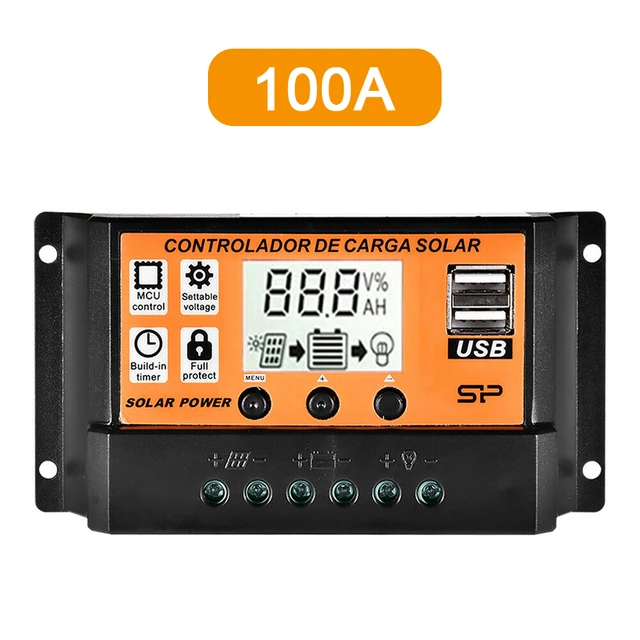MPPT SOLAR CHARGE CONTROLLER USAGE
Introduction
Solar power has grown in popularity as a clean energy source as the globe moves toward renewable energy sources. The charge controller, which controls how much energy is sent from the solar panels to the battery bank, is the central component of any solar power system. Maximum Power Point Tracking (MPPT) solar charge controllers are distinguished from other charge controller types by their remarkable efficiency and adaptability. We will examine MPPT solar charge controllers in this post, including their applications, features, constraints, and battery types that work with them.
What is an MPPT Solar Charge Controller?
A smart gadget called an MPPT solar charge controller tracks a solar panel array’s maximum power point to maximize energy harvesting and ensure effective charging of the battery bank that is connected. In contrast to conventional PWM (Pulse Width Modulation) controllers, MPPT controllers continually measure the voltage and current output of the solar panel and modify the charging parameters in order to maximize energy output.
Usage and Benefits
MPPT solar charge controllers are designed for use in off-grid solar power systems, offering numerous benefits:
– Maximum Energy Harvesting: MPPT controllers ensure that the solar panels operate at their maximum power point, resulting in up to 30% more energy production compared to PWM controllers.
– Flexible Charging: MPPT controllers can charge various battery types, including lead-acid, lithium-ion, and nickel-cadmium.
– High Efficiency: MPPT controllers boast high efficiency rates, often exceeding 95%, minimizing energy losses during charging.
– Smart Charging: Advanced MPPT controllers feature smart charging algorithms, preventing overcharging, undercharging, and battery damage.
Capabilities
MPPT solar charge controllers can:
– Charge batteries from a wide range of solar panel configurations
– Monitor and adjust charging parameters in real-time
– Provide data logging and monitoring capabilities
– Support multiple battery charging profiles
– Offer remote monitoring and control capabilities
Limitations
While MPPT solar charge controllers excel in efficiency and flexibility, they have some limitations:
– Higher Cost: MPPT controllers are generally more expensive than PWM controllers
– Complexity: MPPT controllers require more sophisticated electronics and software, potentially leading to higher maintenance costs
– Limited Compatibility: Some MPPT controllers may not be compatible with all solar panel or battery configurations
Battery Compatibility
MPPT solar charge controllers can be connected to various battery types, including:
– Lead-Acid Batteries
– Lithium-Ion Batteries
– Nickel-Cadmium Batteries
– Gel Batteries
– AGM Batteries
When selecting a battery for use with an MPPT solar charge controller, consider the following factors:
– Battery Type: Ensure the controller is compatible with the chosen battery type
– Capacity: Select a battery with a suitable capacity for the solar panel array’s energy output
– Voltage: Match the battery voltage to the controller’s output voltage
Conclusion
MPPT solar charge controllers, which provide unmatched efficiency and flexibility, have completely transformed the solar power sector. Users can maximize the performance of their solar power systems by being aware of the capabilities and constraints of these controls. To guarantee optimum performance, take into account the particular requirements of your system when choosing an MPPT controller and pick a battery type that works with it. Unlock the maximum potential of your solar power system by embracing MPPT technology.
